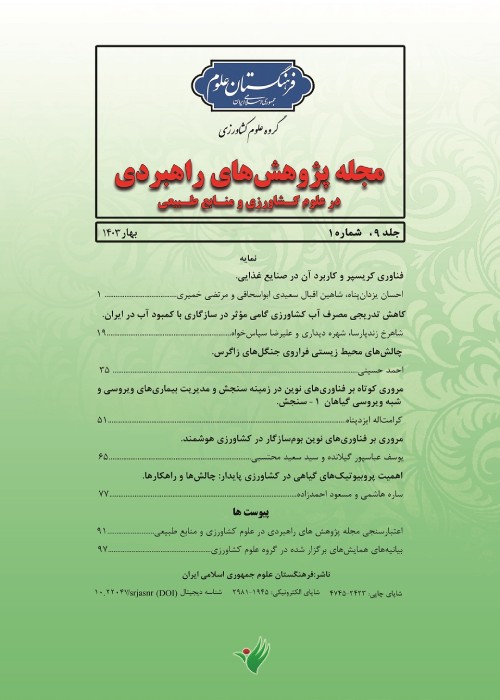Decline of Zagros Forest Ecosystem: Status of Dieback in Various Tree Species
Author(s):
Article Type:
Research/Original Article (بدون رتبه معتبر)
Abstract:
The mortality of forest species, especially in arid and semi-arid regions, has been considered the main challenge of diverse ecosystems. The aim of this study was to compare the mortality status of Iranian oak and Mt. Atlas mastic tree in the Zagros forests in western Iran. To carry out this study, whole forests in the Gilan-e Gharb were considered. For this purpose, the entire surface was divided into equal parts with a sampling grid of 3000 x 3000 m2. Ninety two sample plots with an area of 0.25 ha considered for sampling at the intersection of the lines in the forests. Sampling of all the were trees in the plots was done 100%. Based on objective observations, the ratio of dried branches to the whole tree branches was used to determine the dryness ratio of the studied trees. The results showed that the frequency of 1st mortality in different species shows that its highest frequency is 83.4% in Iranian oak (Quercus brantii Lindl.). Other species in the region, such as Prunus lycioides C.K.Schneid., Pistacia atlantica mutica Desf., Acer monspessulanum L., and Crataegus sp. L., had 5.1%, 4.4%, 3.2%, and 2% of 1st mortality, respectively. The frequency of 2nd mortality in Persian oak was 84.4% and in other species in the region, such as P.atlantica, Crataegus sp, and P.lycioides C.K.Schneid., it was 9.8%, 2.25%, and 2%, respectively. Similarly, the highest frequency of trees with mortality grade 5 included Iranian oak, P. atlantica mutica Desf., and P. lycioides C.K.Schneid. species with 94.2%, 2.8%, and 2.6%, respectively. From the total population of Persian oaks, 28% of them were healthy and 72% of them were dying in various degrees. In the wild plum species, 83% of the trees were healthy and 17% were dying. Furthermore, in the wild pistachio species, 23% of the trees were alive and healthy and 77% of them were dead. Based on the results, supporting measures will include monitoring the structure of stands for better protection of forests, maintaining the mix of stands and stimulating structural complexity and heterogeneity, that are valuable tools to reduce the risks associated with increasing tree dieback, and other new disturbance regimes in line with the resilience strategy.
Keywords:
Language:
Persian
Published:
Strategic Research Journal of Agricultural Sciences and Natural Resources, Volume:8 Issue: 2, 2023
Pages:
171 to 186
magiran.com/p2628032
دانلود و مطالعه متن این مقاله با یکی از روشهای زیر امکان پذیر است:
اشتراک شخصی
با عضویت و پرداخت آنلاین حق اشتراک یکساله به مبلغ 1,390,000ريال میتوانید 70 عنوان مطلب دانلود کنید!
اشتراک سازمانی
به کتابخانه دانشگاه یا محل کار خود پیشنهاد کنید تا اشتراک سازمانی این پایگاه را برای دسترسی نامحدود همه کاربران به متن مطالب تهیه نمایند!
توجه!
- حق عضویت دریافتی صرف حمایت از نشریات عضو و نگهداری، تکمیل و توسعه مگیران میشود.
- پرداخت حق اشتراک و دانلود مقالات اجازه بازنشر آن در سایر رسانههای چاپی و دیجیتال را به کاربر نمیدهد.
In order to view content subscription is required
Personal subscription
Subscribe magiran.com for 70 € euros via PayPal and download 70 articles during a year.
Organization subscription
Please contact us to subscribe your university or library for unlimited access!



